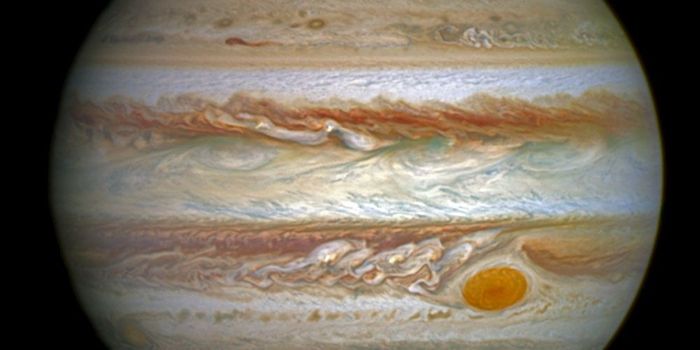
Astronomers have always relied on simulations to map the universe and discover how galaxies are formed. While some of the data provided by computer-aided simulations was sufficient, more often than not the simulated galaxies were not very accurate. They depicted galaxies that were either too small or too large and the data was too old to provide a realistic simulation. The methods used to create the simulations could only do so much.
Part of the problem was finding the right way to simulate galactic winds. Galaxies are formed by stars, supernova explosions and supermassive black holes which create strong winds of gas necessary for stars to form.
An international team of astronomers, based at the Universities of Leiden in the Netherlands and Durham in the UK and led by professor Joop Schaye (Leiden University), developed a simulation of the universe in which realistic galaxies are created; their mass, size and age are similar to those of observed galaxies. Their similarity is due to the simulation of the galactic winds; when the gas clouds and wind in space can be accurately represented, the resulting simulated galaxy is much more accurate than previous models.
Major computing power was necessary to crunch the numbers for these simulations. The simulations took several months to run at the "Cosmology Machine" in Durham and at "Curie" in Paris, among the largest computers used for scientific research in the UK and France, respectively. The project, dubbed EAGLE (Evolution and Assembly of GaLaxies and their Environments), is now providing data to astronomers. The EAGLE project can provide researchers with data on the formation of galaxies from 14 billion years ago to the present day.
The similarities are not just limited to the galactic winds. The galaxies shown in the simulation created by Schaye's team are also almost identical in size and shape to the actual galaxies observed by astronomers. Study co-author Richard Bower, from Durham University said, "The universe generated by the computer is just like the real thing. There are galaxies everywhere, with all the shapes, sizes and colors I've seen with the world's largest telescopes. It is incredible. In the EAGLE universe I can even press a button to make time run backwards."
Now that an accurate simulation exists that can depict galaxies so realistically, detailed studies can be made about how these galaxies began and developed over time. Study co-author Rob Crain from John Moores University Liverpool stated, "This is the start of a new era for us. We can now manipulate the conditions of the universe and study the evolution of galaxies throughout the past 14 billion years."
The results of the EAGLE study will be published in the Monthly Notices of the Royal Astronomical Society January 2015 issue in an article entitled "The EAGLE project: simulating the evolution and assembly of galaxies and their environments"
 Astronomers have always relied on simulations to map the universe and discover how galaxies are formed. While some of the data provided by computer-aided simulations was sufficient, more often than not the simulated galaxies were not very accurate. They depicted galaxies that were either too small or too large and the data was too old to provide a realistic simulation. The methods used to create the simulations could only do so much.
Astronomers have always relied on simulations to map the universe and discover how galaxies are formed. While some of the data provided by computer-aided simulations was sufficient, more often than not the simulated galaxies were not very accurate. They depicted galaxies that were either too small or too large and the data was too old to provide a realistic simulation. The methods used to create the simulations could only do so much.







